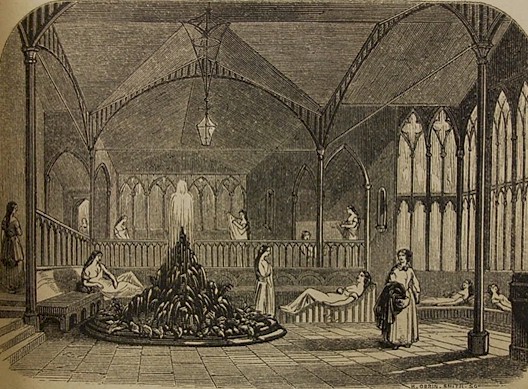St Ann's Hill Hydro, Blarney:
women's day in the frigidarium
of the
first successful Victorian Turkish bath,
1856

< Engraving from Descriptive notice of the rise
and progress of the Irish Graffenberg
The new Turkish baths building, with its semi-circular roof over the tepidarium, was linked to the original building used by patients for other hydropathic baths and treatments. The walls were ‘built of turf, smoothly plastered’ because of its heat insulation properties.1
The frigidarium, or cooling-room, had large windows, and an arched ceiling supported by neatly carved pillars of polished oak; it was most profusely hung with drapery of a rich character, and, with an eye to the position of colours, rich stained glass was used in the windows.2
This page first published 19 November 2023
This page enlarges an image or adds to the information found below:
Origin of the Victorian Turkish bath

Victorian Turkish Baths: their origin, development, and gradual decline



Comments and queries are most welcome and can be sent to:
malcolm@victorianturkishbath.org
The right of Malcolm Shifrin to be identified as the author of this work
has been asserted by him
in accordance with the Copyright, Designs and Patents Act 1988
© Malcolm Shifrin, 1991-2023